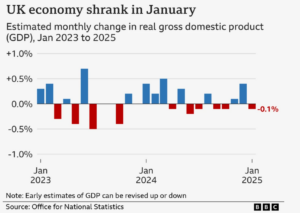When the going gets tough…
Times are tough in the UK at the moment. When the market is down, and customers are clutching their wallets like it’s their last fiver, sales becomes a different game. You’re not just selling a service anymore—you’re selling certainty, risk reduction, and survival.
This week’s Three Things provides guidance on techniques to sharpen your sales strategy in tough times. Enjoy.

#1. The “Pain First” approach
Sell aspirin, not vitamins. In a downturn, customers aren’t buying “nice to have” services—they’re focused on solving immediate pain points. So, instead of pitching broad benefits, hone in on their biggest current problem and show how your service is a direct solution.
How to do it:
- Start customer conversations with: “What’s keeping you up at night?”
- Use urgency-led messaging: “This will reduce your cash leakage by 20% in the next three months.”
- If they say “Not now”, reframe: “If not now, then when? What will change in 6 months that isn’t possible today?”
People will always pay for relief—position your service as the painkiller.
#2. The Trojan horse strategy
When customers are cost-conscious, getting a foot in the door is everything. Instead of pushing a full-service engagement, offer a low-cost, low-risk entry point, a gateway drug —something that gets them working with you now, so you can expand later.
How to do it:
- Offer a diagnostic or audit service —a one-off analysis of their current situation.
- Provide a quick-win pilot project with clear results in 30 days.
- Sell a fixed-fee package that removes pricing uncertainty.
Once you’re in, show results fast—then position the next step as the obvious choice.
#3. The price anchor play
Price sensitivity skyrockets in a downturn, but that doesn’t mean you need to discount. Instead, use price anchoring—a psychological pricing technique—to make your core offer look like a no-brainer.
How to do it:
- Present three options: Gold, Silver, Bronze (hint: most buyers pick the middle).
- Create contrast: Start with a premium offer that’s more expensive, before showing your core package—it’ll seem more affordable by comparison.
- Offer “ROI-Based” Pricing: If customers are hesitant, tie your fee to results—e.g., “If we don’t help you recover £X, you don’t pay.”
Customers may be cautious, but they still spend on what they perceive as value—so shape the way they see it.
Final Thought
In boom times, customers buy to grow. In downturns, they buy to survive. Reframe your service to focus on risk reduction, efficiency, and resilience, and you’ll stay ahead while competitors flounder.
Which of these techniques can you use this week? Let’s get selling.





